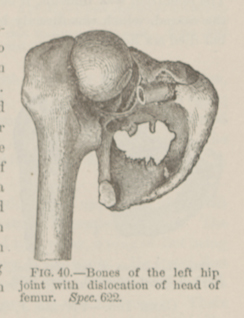Title: Connor, J. W.
Source text: The Medical and Surgical History of the War of the Rebellion. (1861-65.), Part 3, Volume 2 (Washington, DC: Government Printing Office, 1883), 83.
Civil War Washington ID: med.d2e4468
TEI/XML: med.d2e4468.xml
CASE 176.—Private J. W. Connor, Co. D, 81st Pennsylvania, was wounded at Fredericksburg, December 13, 1862. Surgeon J. E. McDonald, 79th New York, recorded his entrance into the field hospital of the 1st division, Ninth Corps, with "Gunshot wound of left thigh." Surgeon J. A. Lidell, U. S. V., contributed the specimen represented in the adjoining wood-cut (FIG. 40) (Cat. Surg. Sect., 1866, p. 243, Spec. 622), and reported the following history: "Admitted to Stanton Hospital, Washington, December 26th, with gunshot fracture of left thigh in upper third; ball not extracted. The injured limb was a good deal swelled; pus flowing from the wound. Exploration did not discover the ball; thigh found fractured high up; amount of displacement small. The case did pretty well till December 31st, when symptoms of pyæmia showed themselves. He grew rapidly worse, and died January 2, 1863. The necropsy showed inflammation of the femoral vein, pus in the femoral and iliac veins, a comminuted fracture in the neighborhood of the trochanters, and the ball firmly impacted in the ischium." The specimen consists of the bones of the hip joint with a portion of the ligaments, the head of the femur being dislocated. The track of the ball is necrosed, but a small quantity of callus has been thrown out on the anterior surface of the femur.
